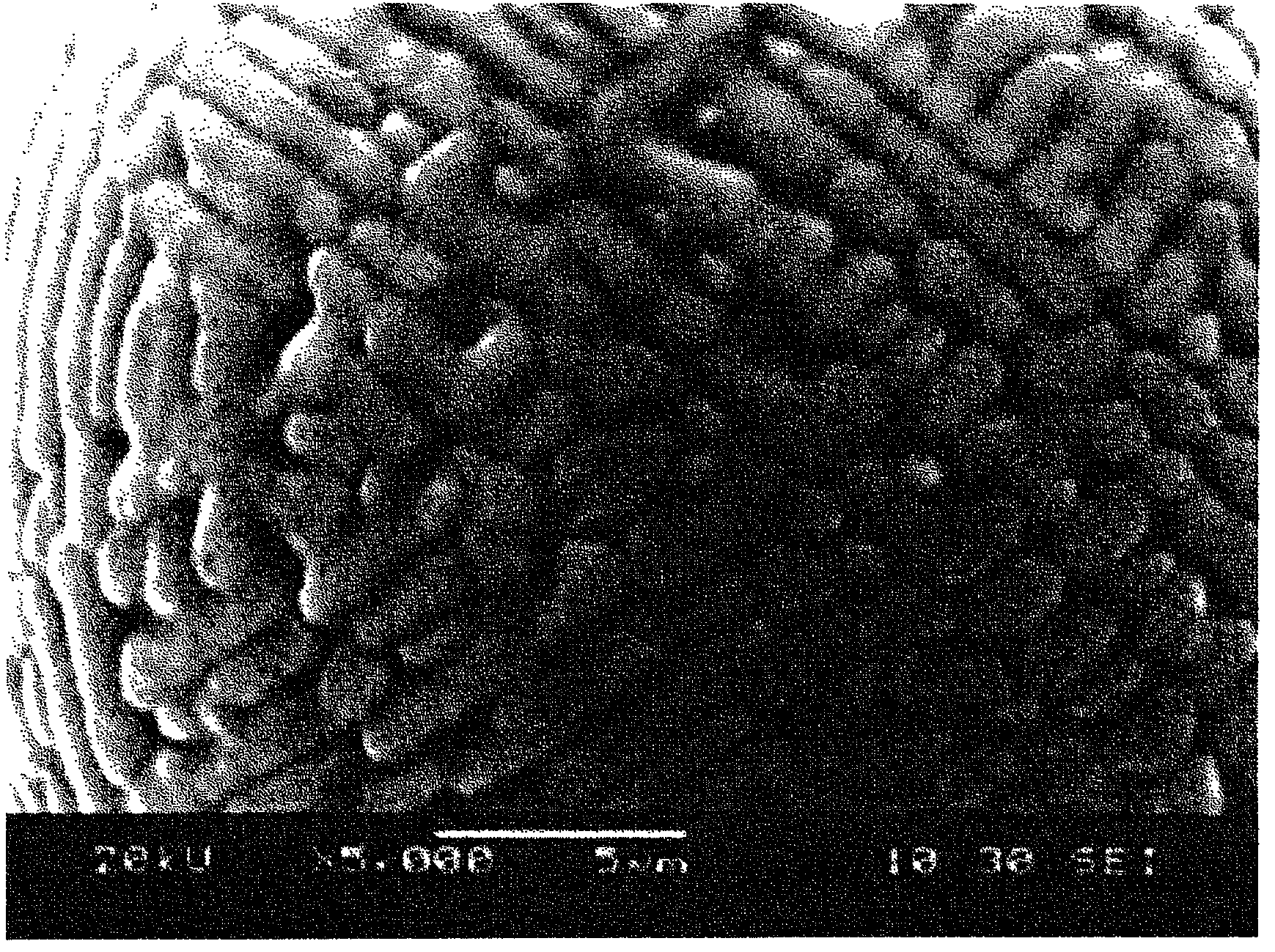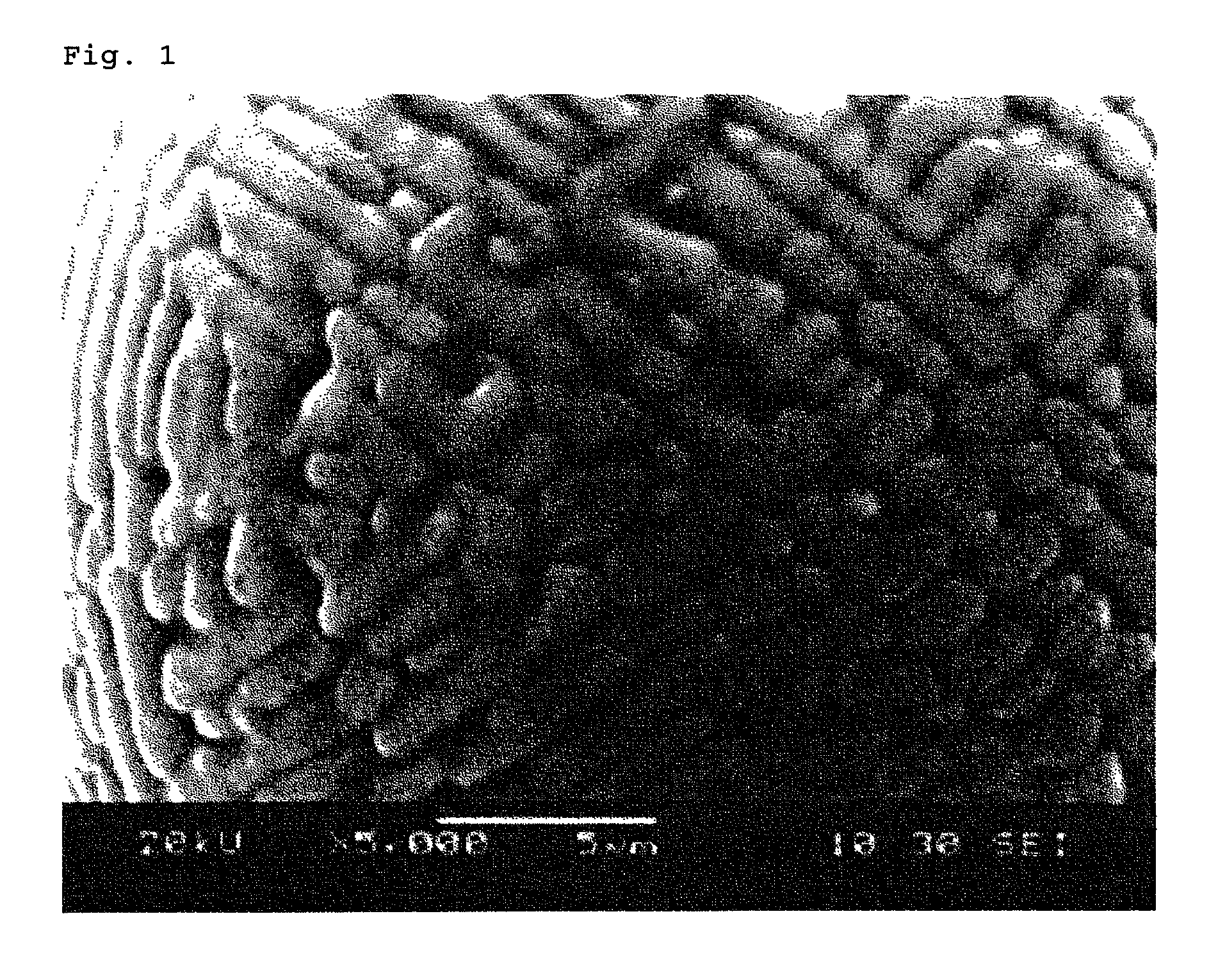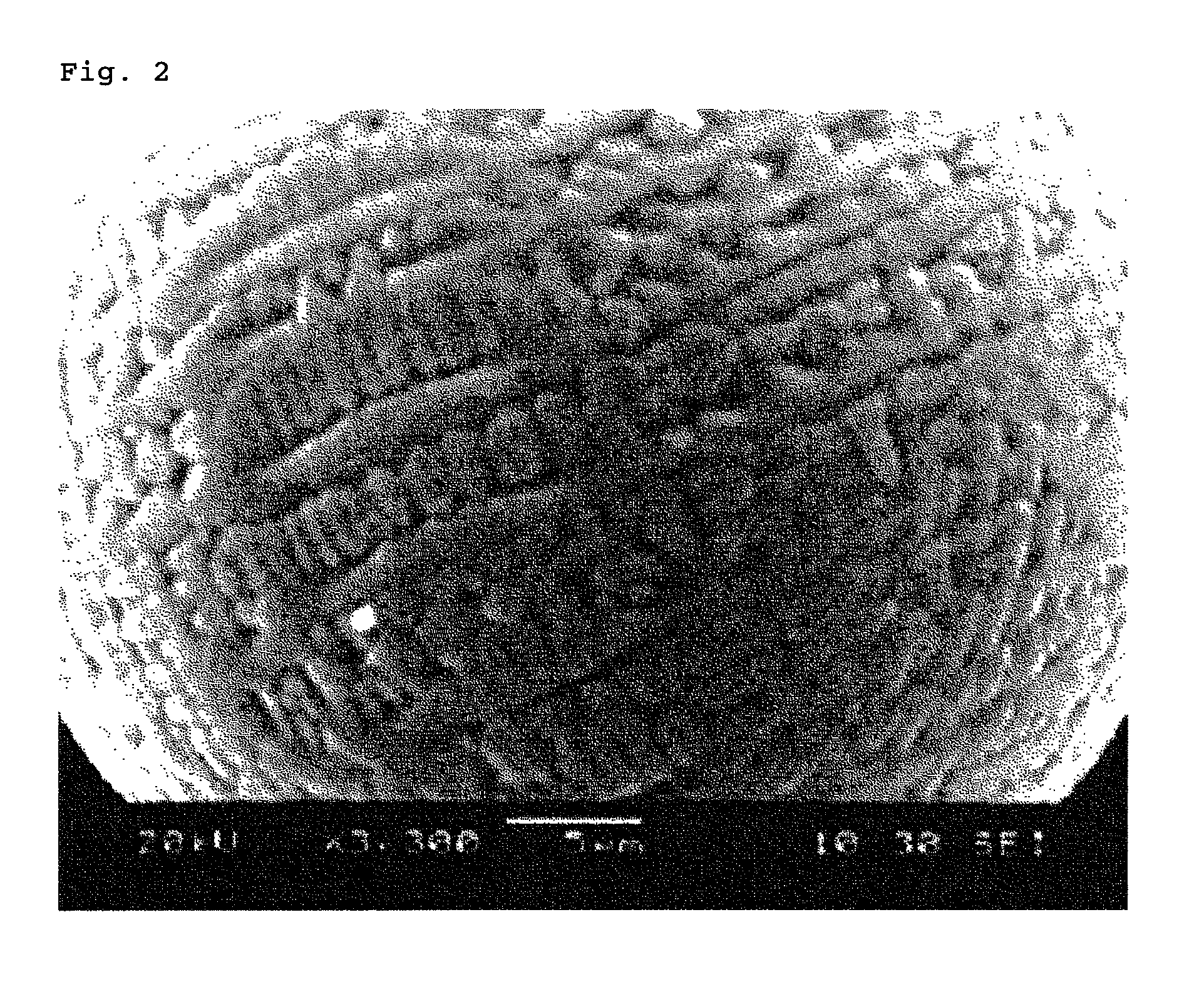Resin-coated ferrite carrier for electrophotographic developer, its production method, and electrophotographic developer using the resin-coated ferrite carrier
a technology of resin-coated ferrite and electrophotography, which is applied in the direction of developers, instruments, optics, etc., can solve the problems of reducing the surface area of available carrier, hardly obtaining uniform images, and hardly reducing the tribochargeability of toner particles, so as to improve the joining strength of particle surfaces, not infiltrate, and stable resistance
- Summary
- Abstract
- Description
- Claims
- Application Information
AI Technical Summary
Benefits of technology
Problems solved by technology
Method used
Image
Examples
example 1
[0078]Iron oxide, manganese oxide and magnesium oxide were weighed in a molar ratio of 50:40:10 to the total of 100 moles, and 0.5 mol of strontium oxide was added thereto to make a mixture together. The mixture was charged with water, and milled to make a slurry of a solid content of 50 wt. %. The resultant slurry was granulated by a spray drier, and classified to obtain a granulated material of 30 μm in average particle size.
[0079]Then, the obtained granulated material was charged in combustible gas flame from propane:oxygen=10 Nm3 / h:35 Nm3 / h under a condition of a flow rate of 40 m / s, thermally sprayed into water to be quenched, recovered from the water, dried, and thereafter classified to produce ferrite particles (carrier core material).
[0080]The average sphericity, apparent density and fluidity of the obtained carrier core material were measured by the following methods. The results are shown in Table 1.
(Average Sphericity)
[0081]As described above, the carrier core material wa...
example 2
[0090]A granulated material was obtained as in Example 1, but with an average particle size of 26 μm under an altered classification condition.
[0091]Then, the obtained granulated material was charged in a combustible gas flame from propane:oxygen=10 Nm3 / h:50 Nm3 / h under a condition of a flow rate of 40 m / s, thermally sprayed into water to be quenched, recovered from the water, dried, and thereafter classified to produce ferrite particles (carrier core material). The average sphericity, apparent density and fluidity of the carrier core material were measured as in Example 1. The results are shown in Table 1.
[0092]The carrier core material, as in Example 1, was coated with the resin, baked, and magnetically separated to produce a ferrite carrier B. The average particle size and the magnetic property of the ferrite carrier B were measured as in Example 1. The results are shown in Table 1. The charge quantity and the resistance were measured as in Example 1. The results are shown in Tab...
example 3
[0093]A granulated material was obtained as in Example 1, but with an average particle size of 33 μm under different classification conditions.
[0094]Then, the obtained granulated material, as in Example 2, was charged in a combustible gas flame from propane:oxygen=10 Nm3 / h:50 Nm3 / h under a flow rate of 40 m / s, recovered in the air, quenched, and classified to produce ferrite particles (carrier core material). The average sphericity, apparent density and fluidity of the carrier core material were measured as in Example 1. The results are shown in Table 1.
[0095]The carrier core material, as in Example 1, was coated with the resin, baked, and magnetically separated to produce a ferrite carrier C. The average particle size and the magnetic property of the ferrite carrier C were measured as in Example 1. The results are shown in Table 1. The charge quantity and the resistance were measured as in Example 1. The results are shown in Table 2 and Table 3.
PUM
 Login to View More
Login to View More Abstract
Description
Claims
Application Information
 Login to View More
Login to View More - R&D
- Intellectual Property
- Life Sciences
- Materials
- Tech Scout
- Unparalleled Data Quality
- Higher Quality Content
- 60% Fewer Hallucinations
Browse by: Latest US Patents, China's latest patents, Technical Efficacy Thesaurus, Application Domain, Technology Topic, Popular Technical Reports.
© 2025 PatSnap. All rights reserved.Legal|Privacy policy|Modern Slavery Act Transparency Statement|Sitemap|About US| Contact US: help@patsnap.com



